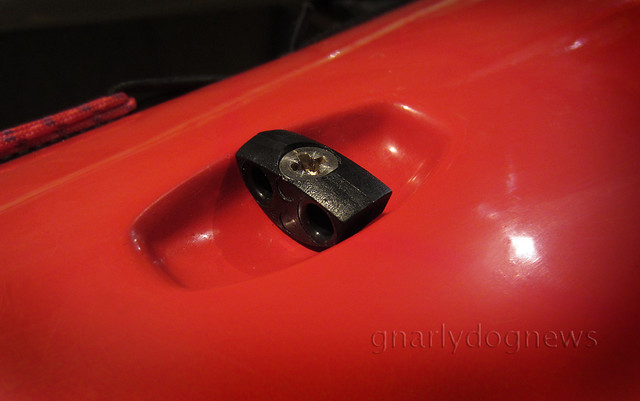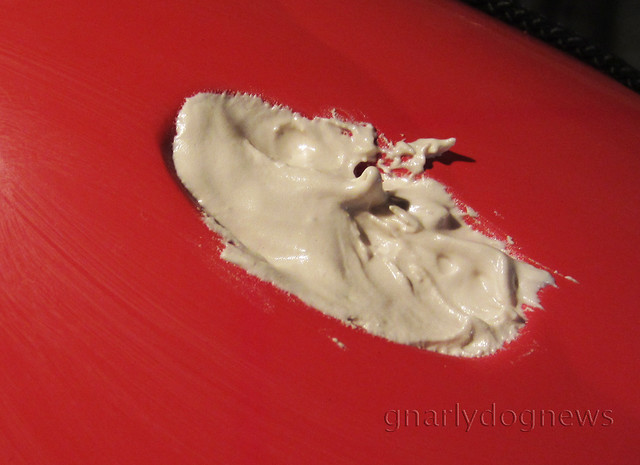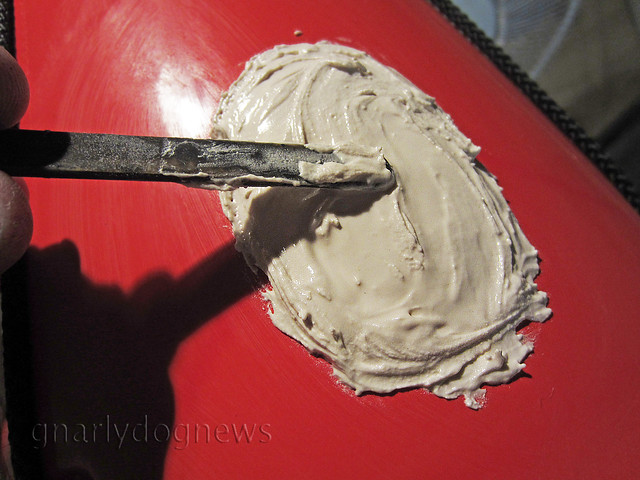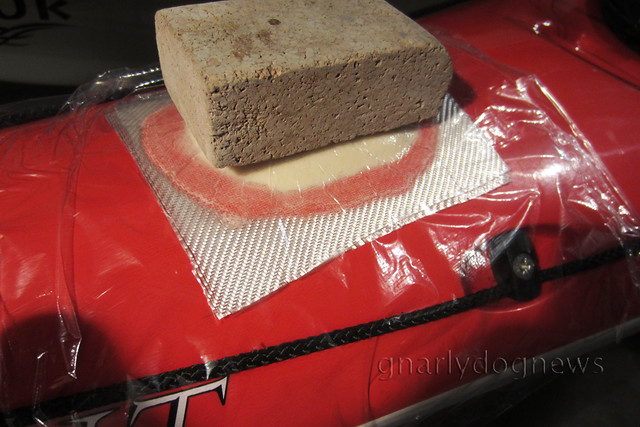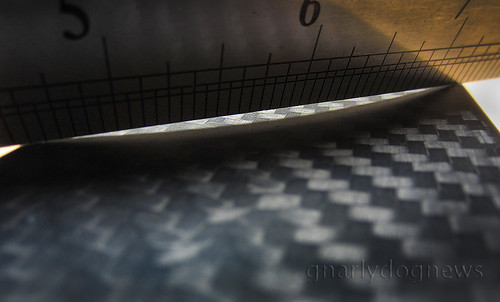After owning numerous kayaks I only had two that had consistently dry hatches.
Kayak hatches leak for a lot of reasons: poor design and materials seems to be the most common but often even a great hatch design can leak on one boat and be dry on the next one.
So what causes hatches to leak?
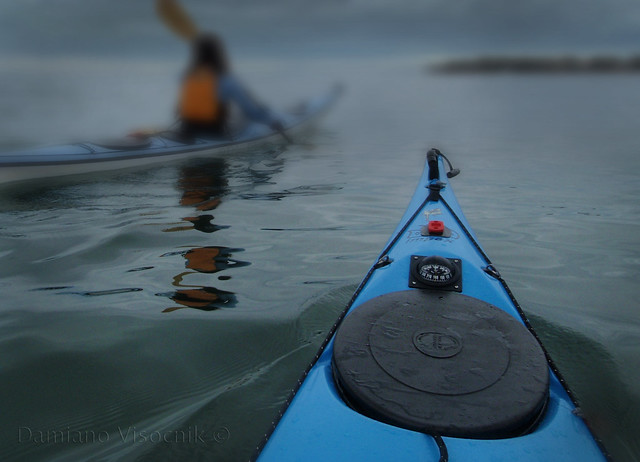
I found that the type of hatches using a neoprene cover seal under a fiberglass lid work well when new but after a few years deteriorate and start to let water in.
Of course, let's not forget that most kayak hatches will remain dry if the kayak is used in calm conditions and the water does not reach the lid.
Some hatches seal extremely well and seem totally leak proof, to then let water in when the kayak is inverted (rolled) on a hot day. Drilling a very small hole into the bulkhead usually solves the problem because it helps to equalize the expanding and contracting air when heated and cooled during rolling.
As air heats up in the sun it expands and when the kayak is suddenly inverted into the cold water, the cooling effect contracts the air inside the hatch resulting in suction. The lid might seal enough to prevent water splashes intrude the hatch space, when paddled right side up, but not enough to prevent the force of suction when submerged (inverted)
But what to do when you know that you have a very good seal with the lid (and there is a breather hole to let the expanding/contracting air in-out) and your hatch area is wet after even a non rolling kayak session?
I had a few cases of hatch covers rims leaking.
The (usually) black rim is cemented to the deck of the kayak by a bonding agent. In quality boats that happens to be an epoxy type glue and in some other kayaks is just simple "goop", ranging from silicon to polyurethane.
Either epoxy type glue or goop bonding can perform the task of keeping those rims attached as long as there is a solid continuous bead around the whole perimeter of the rim.
It does not matter how expensive my kayaks are and from what reputable brand; leaking hatch rims are not uncommon.
I have removed a badly sealed rim: I found the caulking under the rim made very poor contact and looked like the factory worker forgot to press-in the rim firmly enough against the deck. I cleaned up the bad silicon and re-seated the rim with polyurethane.
In an other case the epoxy glue did not make it all around the rim leaving a section without a proper seal. I could not remove the rim (the bond is seriously strong) but I mixed-up some epoxy glue of my own and poured/forced it into the section where there was none.
Last but no least: even with the rim seated well and the lid being positively waterproof in one case a hatch was still leaking despite the best efforts in finding the problem.
On a friend's kayak a hairline crack was eventually noticed on the gelcoat close to the rim after doing the test (below). A bit of poking revealed that the gel coat was all there was keeping the water out. There was a large air bubble in the lay-up where the reputable manufacturer did not fill; just fiber and no resin, letting water seep in.
The repair involved him removing away all the gelcoat above the void, remove loose fibers and clean the area with acetone.
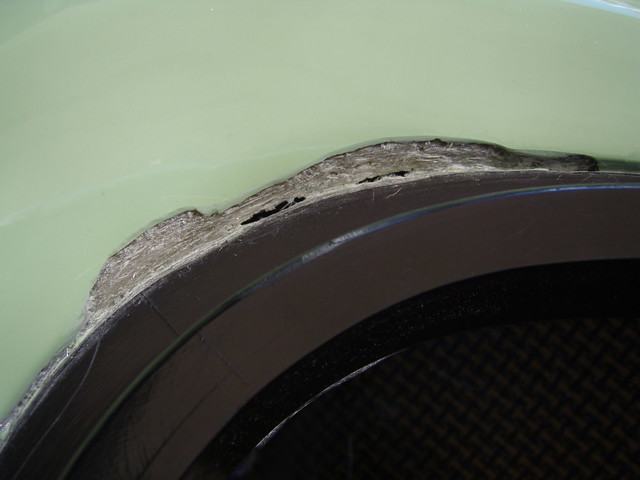
Several solid layers of new cloth and epoxy were laid (inside the hatch) over the repair. Gelcoat had to be matched to the existing color to make the repair invisible.

While performing this repair on the deck the cable for the skeg needed some attention too. It used to be very sticky when trying to deploy it: the housing would flex and bind under pressure. Glassing a long unsecured section of the cable housing to the under deck solved the poor performance.
While some hatch lids will seal really well others will only seal sometimes.
I found that the kayaks with the new Kajak-Sport lids (dual density) work well in winter but poorly in summer. What gives?
I have the mandatory vent holes in the bulkheads but when I go for a rolling session in the summer warm waters it seems that the new lids (softer rubber on the edge, stiff plastic in the center) leak about a cup after an hour or so. I am not the only person that has this problem since others have revealed me to experience the same.
in this video light vaccum was applied to test if water would seep past the lid's lip
A friend of mine solved his case with the dealer promptly shipping him the older style round lids that are made entirely from soft rubber (non floating type): now they seals 100%.
Worth mentioning that after precise measurements of the roundness of the hatch rim, he found it to be 1mm out; would that effect the sealing of the dual density hatches?
However to solve my problem, I am unsure if I will be able to source the old large oval Kajak-Sport lid to address my summer paddling leaks.
PS: The key to these repairs was placing a small waterproof camera inside the hatch and film the source of the leak. I recommend trying it if your hatches are suspect.
PS AUG2012 If you are not happy with the performance of your hatch covers have a look at Sea-Lect Design ones. Review here
.



